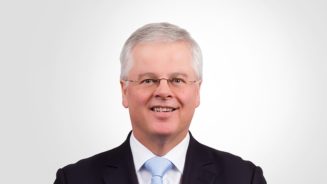“[Emerging markets], which are once again in the ascendancy, offer a natural advantage for active players, given the greater opportunity to discover hidden value,” the firm stated in a statement.
Even though very few active fund managers outperform their benchmarks, it “has not stopped some players launching products in what already seems to be a crowded marketplace—presumably in the belief that they can unearth treasures,” said Barbara Wall, Europe managing director at Cerulli, in the statement.
Investors, however, haven’t been swayed by the promise of the hidden treasures, and prefer to invest in passive emerging market funds. Net flows into passive emerging market funds have exceeded those into active funds in 2016 and so far in 2017, according to data from Morningstar, although in recent weeks investors have taken profits.
Passive inflows have also exceeded active in Asia ex-Japan equity funds.
Net flows into emerging market and Asia ex-Japan equity funds
| 2016 | January-June 2017 | |
| Emerging markets equity index funds | 32.5bn | 31.8bn |
| Emerging markets equity active funds | 5.3bn | 11.8bn |
| Asia ex-Japan equity index funds | 2.5bn | 3.5bn |
| Asia ex-Japan equity active funds | -6.4bn | 1.3bn |
Data: Morningstar, 30 June 2017, in US dollars
The assets under management in index funds have also been growing as a share of the emerging markets and Asia ex-Japan fund sectors. Passive funds currently account for 32.3% of the AUM of the emerging market sector and 16.3% of the AUM of the Asia ex-Japan sector.
The speed of the transition has been faster for emerging market funds than for Asia ex-Japan funds, as the chart based on Morningstar data shows.
While passive funds have also dominated inflows of Asia ex-Japan equity funds in the past 18 months, their market share is not as high as that of passive global emerging market funds, so the competitive pressure on active managers is arguably lower.
Percentage share of passive fund AUM

Data: Morningstar, 30 June 2017, AUM in US dollars
Analysing the net inflows into emerging market funds from European investors, the report noted that Blackrock’s ETFs helped the firm to the top of the league table by net new assets in the first half of 2017, with net new inflows of €3.8bn (£3.5bn, $4.2bn).
Although active fund houses such as Ashmore and Robeco “are clearly prospering” in emerging markets, according to the report, they may feel pressure from passive funds and may have to cut fees to compete.
Alternatively, they’ll have to prove their worth by generating superior returns, or by leveraging their expertise in areas that are in demand by investors, such as environmental, social and governance (ESG) principles.





